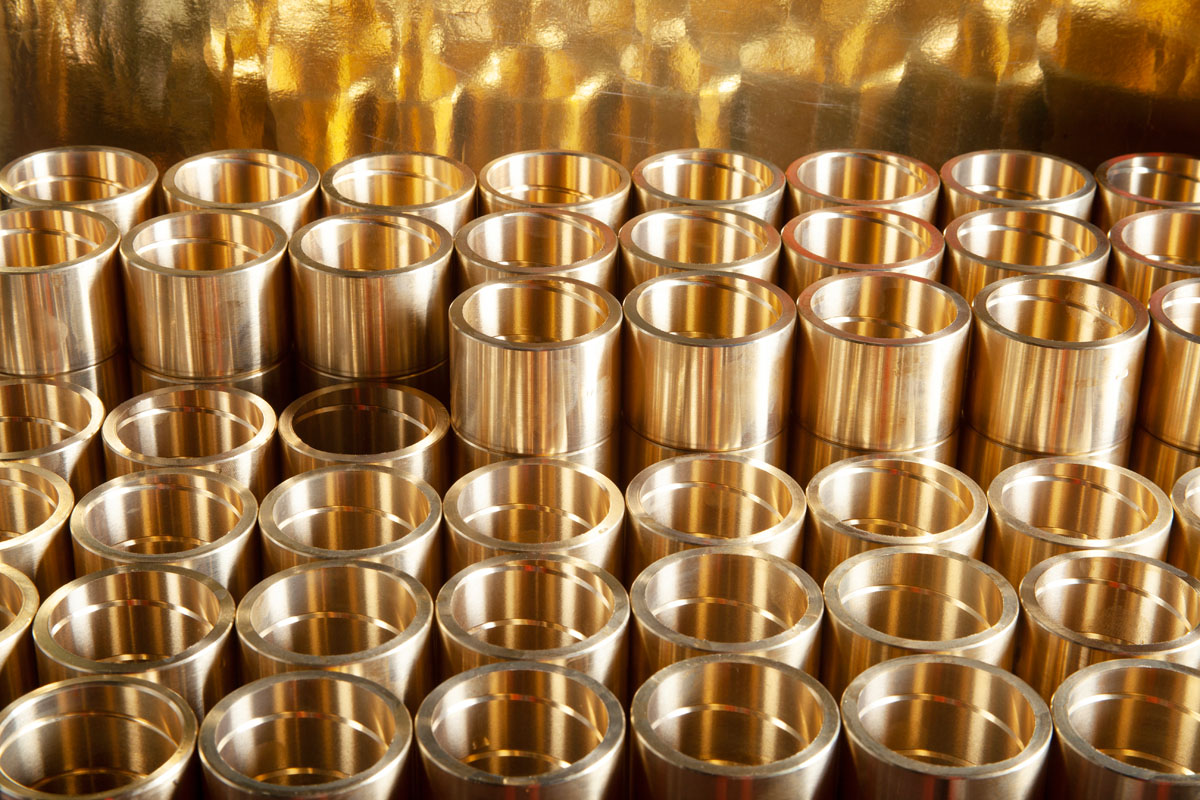A metal alloy is a material that blends more than one metal or combines a metal with other non-metallic components.
For instance, steel is an alloy of a metallic component (iron) and a minute amount — up to two percent— of a non-metallic component (carbon). Additionally, brass is an alloy of 2 metals: zinc and copper.
When compared to metals, alloys vary in their properties and characteristics, like composition, applications, how they’re produced, and their expense. Keep reading to learn more concerning alloys.
Alloys are an instance of “teamwork makes the dream work,” because each material inside the alloy contributes its own elements to the combination or mixture. Some alloys are going to take the best characteristics of each bestowing element and produce a final product that is harder, more resilient, and/or more corrosion resistant.
The cautious chemistry that goes into producing these precise ratios ultimately produces substances with unique, useful characteristics.
How are alloys created? How do alloys work?
Going a little deeper into alloy chemistry indicates why alloys are so beneficial in such a wide variety of sectors.
Since alloys combine various components, they contain atoms of various sizes. How these atoms mix and interact with each other gives alloys their category. Using alloy chemistry, an alloy can be categorized as substitutional or interstitial, according to its atomic configuration.
Substitutional alloys
These alloys are formed from atom interchange mechanisms. The metallic components have likewise atomic radii and chemical-bonding abilities, so the atoms from one metal can inhabit the same areas as their counterpart in the atomic metal network. Notable substitutional alloys can comprise of brass and bronze.
Interstitial alloys
Interstitial alloys are formed when smaller atoms from one component fill the gaps of the metal network. The atoms from each component do not inhabit the same areas. Steel is an instance of an interstitial alloy. Regarding steel, the small-scale carbon atoms fill in gaps among iron atoms.
In each instance, the atoms in the alloy cannot slide over each other as easily as those in pure metals, meaning that the alloy is more robust and stronger than either of the pure metals used to produce it. Say it’s like velcro: if you just have one side of it, it’s not going to stick to itself as securely as the differing loops and hooks are going to grip together.
Why are metal alloys useful?
Pure metals are almost never found in manufacturing because they are too malleable, or pliant. However, as demonstrated above, alloying a metal often elevates its properties. Some alloys are produced to be better corrosion resistance or enhanced conductivity, and some are produced to considerably increase their load-bearing capacities.
The physical characteristics of an alloy — like conductivity, reactivity, and denseness — may not vary considerably from its constituent elements. Nevertheless, the engineered properties of an alloy — like tensile and shear strength — may be significantly different.
Consequently, metal alloys are in great demand in a variety of applications and sectors like manufacturing, electronic components, home goods, construction, plumbing, and the automotive and aerospace sectors.
Examples of popular alloys and their uses:
Brass
Brass is an alloy of zinc and copper. This alloy has a low melting temperature and is extremely pliable and durable. It is utilized in approaches in which low friction and corrosion resistance are required like:
- Locks
- Bearings
- Ammunition components
- Appliance parts
- Decoration
Phosphor Bronze
Phosphor bronze is comprised of copper alloyed with point five percent tin and point zero one percent phosphorus. It is corrosion resistant and exhaustion and should be utilized in:
- Rods for welding
- Bushings
- Bearings
- Springs
- Switch components
- Boat propellers and other approaches in the marine setting
Steel
Steel is an alloy of carbon and iron. It has high tensile strength and low expense. It is often used in:
- Automotive components
- Foundation
- Construction
- Household goods
- Kitchen appliances
Beryllium Copper
Also called Alloy 25 or BeCu, it is a copper alloy with point five to three percent beryllium. It is weldable, pliant, and has non-sparking and non-magnetic attributes. It is resistant to corrosion, oxidation, and non-oxidizing acidic. In addition, beryllium copper has exceptional thermal and electric conducting abilities. It is often used in:
- Electrical connector contacts
- Small-scale springs
- Computer components
- Musical instruments
- Tools for hazardous settings like aerospace engineering and metalworking
Are metal alloys expensive?
A common mistake is that metal alloys are expensive because of the multiple steps required for their production. Nevertheless, a lot of metal alloys, like brass and bronze, have been utilized for such a long time that the alloy can usually be acquired for a lower cost than those of the constituent pure metals.
ARTISTIC ALLOYS & DESIGN OFFERS CUSTOM METAL FABRICATION IN ARIZONA, CALIFORNIA, COLORADO, & MORE
Artistic Alloys & Design offers metal design and fabrication for the entire US! If you live anywhere in the Phoenix Valley and want to have some custom metal work done, Artistic Alloys & Design can craft any type of metal item you want. From entry doors to range hoods or stair railings we have precisely what Arizona businesses and homeowners are looking for.




